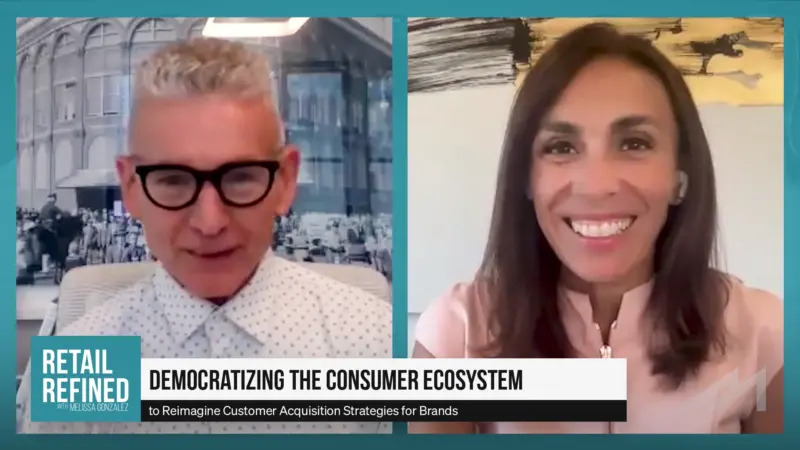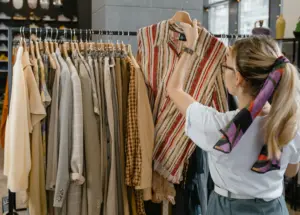Returns Cost Retailers Billions. Making Them Even Easier for Customers Will Turn Returns into Revenue.
Recently, fashion retailer H&M began charging its UK customers a small fee for returning online purchases in-store — and then hurriedly backtracked on this strategy. Meanwhile, the National Retail Federation found that returns resulted in $816 billion in lost sales for retailers in the United States last year. It should be no surprise, then, that businesses are exploring strategies like shortening return windows and instituting return fees. But with return costs being linked to lower customer loyalty, is there a way for retailers to turn returns into revenue?
According to experts, offering virtual try-ons and outfit matching helps diminish the likelihood of returns. And while returns will remain an inevitable part of retail, they can also present a revenue opportunity. Experts believe that incentivizing customers to return items in-store offers opportunities to recoup revenue through additional purchases. Businesses should also focus on optimizing reverse logistics, especially in the fast-paced world of fast fashion where product life cycles are incredibly short!
Steven Carnovale, Associate Professor of Supply Chain Management at the College of Business at Florida Atlantic University, and Co-Editor-in-Chief of the Journal of Purchasing and Supply Management, finds that, while it may seem counterintuitive, making returns more accessible and easier for customers will help lessen the cost burden of returns for retailers, in in turn, turn returns into revenue.
Steven’s Strategies to Turn Returns Into Revenue
“Where can we reduce friction for the customer? Both on the pre-purchase and on the return side. So for example, a strategy that really got deployed exceptionally well by a number of retailers is virtual try-ons or virtual in the case of retailing, [in] the case of apparel, it’s matching outfits to one another to see how they might go together or incentivizing different accessories. So if you do everything ahead of time to make the purchase as streamlined and frictionless as possible, it typically reduces the likelihood that the customer is going to return.
In the space of reverse logistics, returns in general are such a necessary evil, right? So on the one hand, we’ve seen in the past that companies who have penalized returns either with a restocking fee or with a flat cost or even something as small as charging customers to return, they’ll ultimately see what they want, which is a reduction in returns. But long-term, they tend to have reduced customer repurchase intentions and things like that. So what it does is, it shifts people away from engaging in business with that company because of those fees.
So, you know, one example is Apple computers, [which] until about, I think it was seven, maybe eight years ago, had a 15% restocking fee. You had a 14-day window plus a 15% restocking fee. Now it’s just the 14-day window. You know, you’ve got other companies in the apparel business, much like H&M, but you’ve got Nordstrom. They have an incredibly liberal returns policy. And what it does is, it incentivizes customers to be able to make purchases. So with that background in mind, if the question is how do you balance customer satisfaction with the necessary cost of processing returns, the idea is to get them into the store to do the return as easily as possible and then incentivize them to continue to shop.
So there’s a reason why H&M has zero cost to get them into the store, but $1.99 cost for kind of the faceless, nameless return, which is there’s going to be a loss in margin on that product that’s coming back unless it wasn’t worn at all. It has to get disposition processed, sent out, maybe it’s a slight damage or whatever the case is. So if you can get them into the store, there’s an opportunity to recoup revenue by making them have another purchase. Or as in the case of H&M, if it’s a membership, if you remove returns fees by having them be a member, then you’ve got this solid base of subscribers to continue to market and generate to.
So at the end of the day, when you take all these bits and pieces together, I think the net of it is not only are returns a necessary evil, but they can be a revenue opportunity if done right. And so it’s a lot easier to incentivize people [to] engage in a transaction and move towards something that will benefit them rather than to penalize them. Because one of them, which is to say the penalizing case, is kind of stepping over dollars for pennies in the long run. And I think ultimately, that’s something that should be carefully thought of. Going into your strategic planning, knowing that there’s going to be a sizable reverse logistics cost within the retail space is probably the most fundamental thing to begin with. But then the idea is, where can we reduce friction for the customer, both on the pre-purchase and on the return side?
So for example, a strategy that really got deployed exceptionally well by a number of retailers is virtual try-ons, or virtual in the case of retailing, excuse me, in the case of apparel, it’s matching outfits to one another to see how they might go together, or incentivizing different accessories. So if you do everything ahead of time to make the purchase as streamlined and frictionless as possible, it typically reduces the likelihood that the customer is going to return. In addition to that, size guides for apparel are pretty key, both with shoes, clothing, basically giving the customer as much information as possible to mitigate the likelihood that they’re going to return. Now, we have to operate knowing that there will be some percentages of returns.
That being the case, how you optimize the, or rather I should say, minimize the cost while still making it frictionless for the customer, this is where you’ll see companies have self-service systems. So rather than you, the company, having somebody process the return for the consumer, you go onto a system where you enter your order ID, you get some kind of return code with instructions that the consumer prints out, and essentially they become their own store clerk. That minimizes labor costs. Then it’s simply a matter of having the processes in place on the back end from a reverse logistics standpoint, which is gathering information, appropriate systems to disposition the product to say, we can put this right back out, this one needs to be reconditioned, this one is not salvageable.
And in that whole system, what you’re trying to fight is time. Because especially in the fast fashion case, and more generally with products overall, in the fast fashion case, the product life cycles aren’t seasonal anymore. The product life cycles are six, maybe seven weeks, it could be even shorter, 16 days. [So] these styles are coming out so quickly, you’re fighting against time. [To] summarize everything that I just said kind of more succinctly, it starts on both sides. On the one hand, make the transaction as frictionless and as easy as possible, make the return as efficient and customer-driven as possible, with the whole point of trying to minimize the amount of time the product sits through the returns process.”
Article written by Aarushi Maheshwari.







